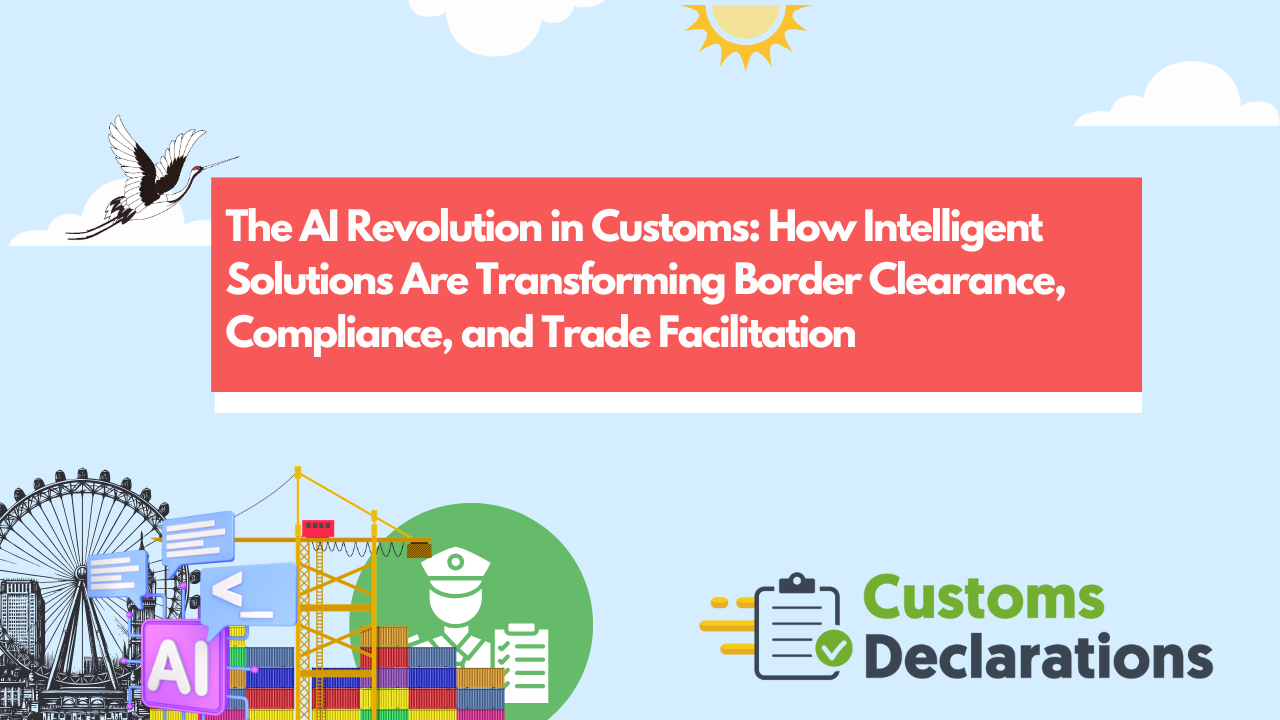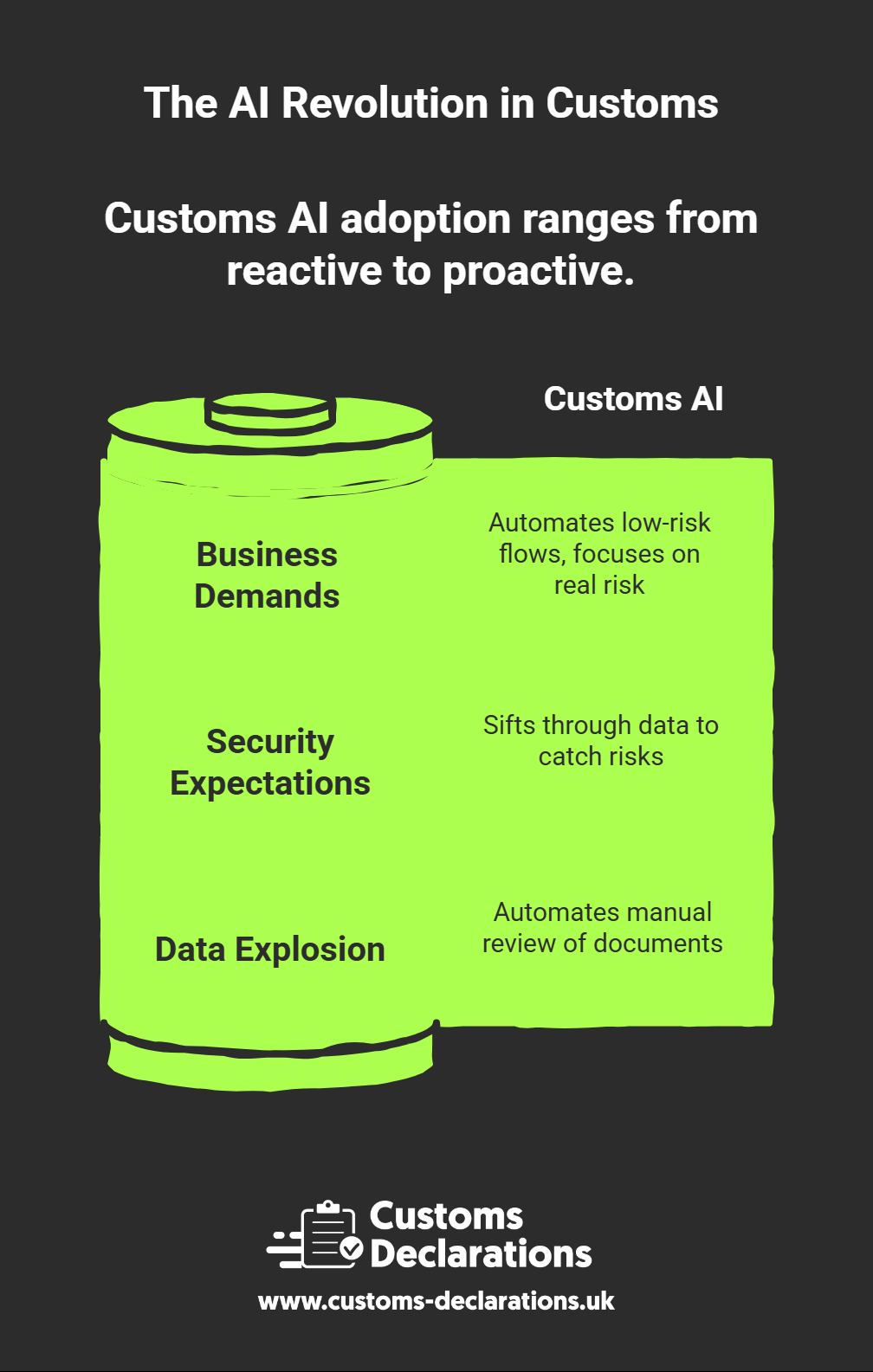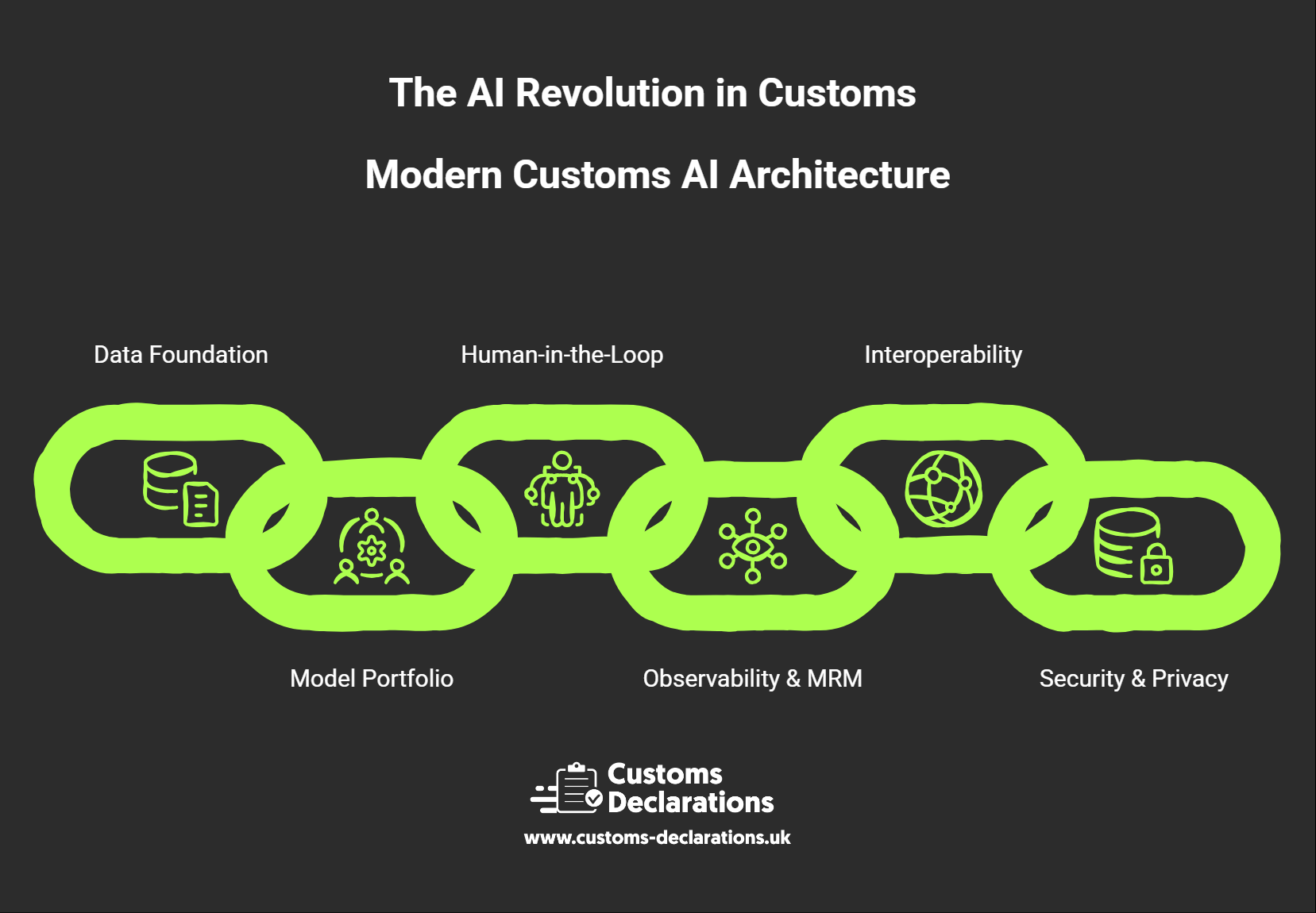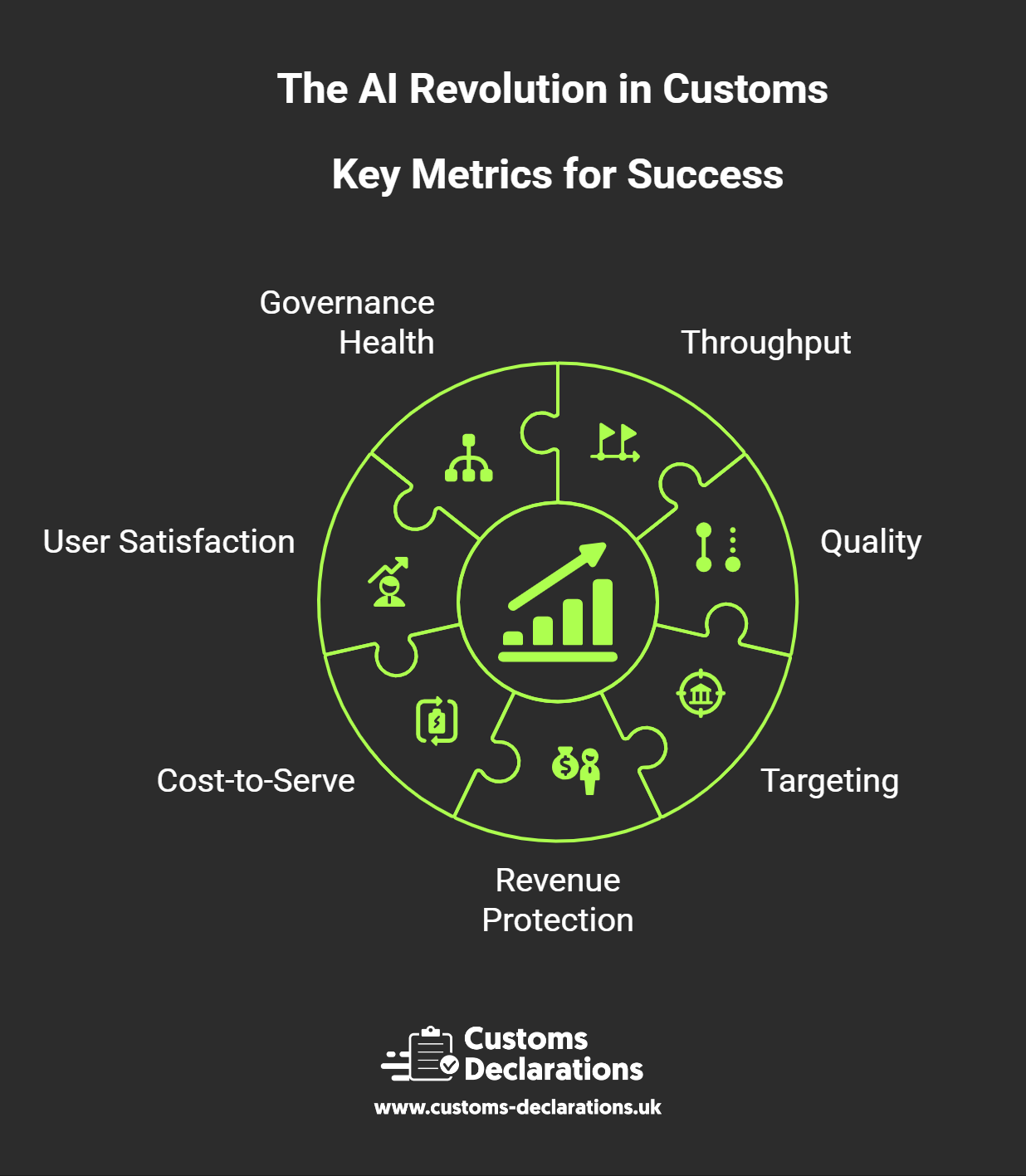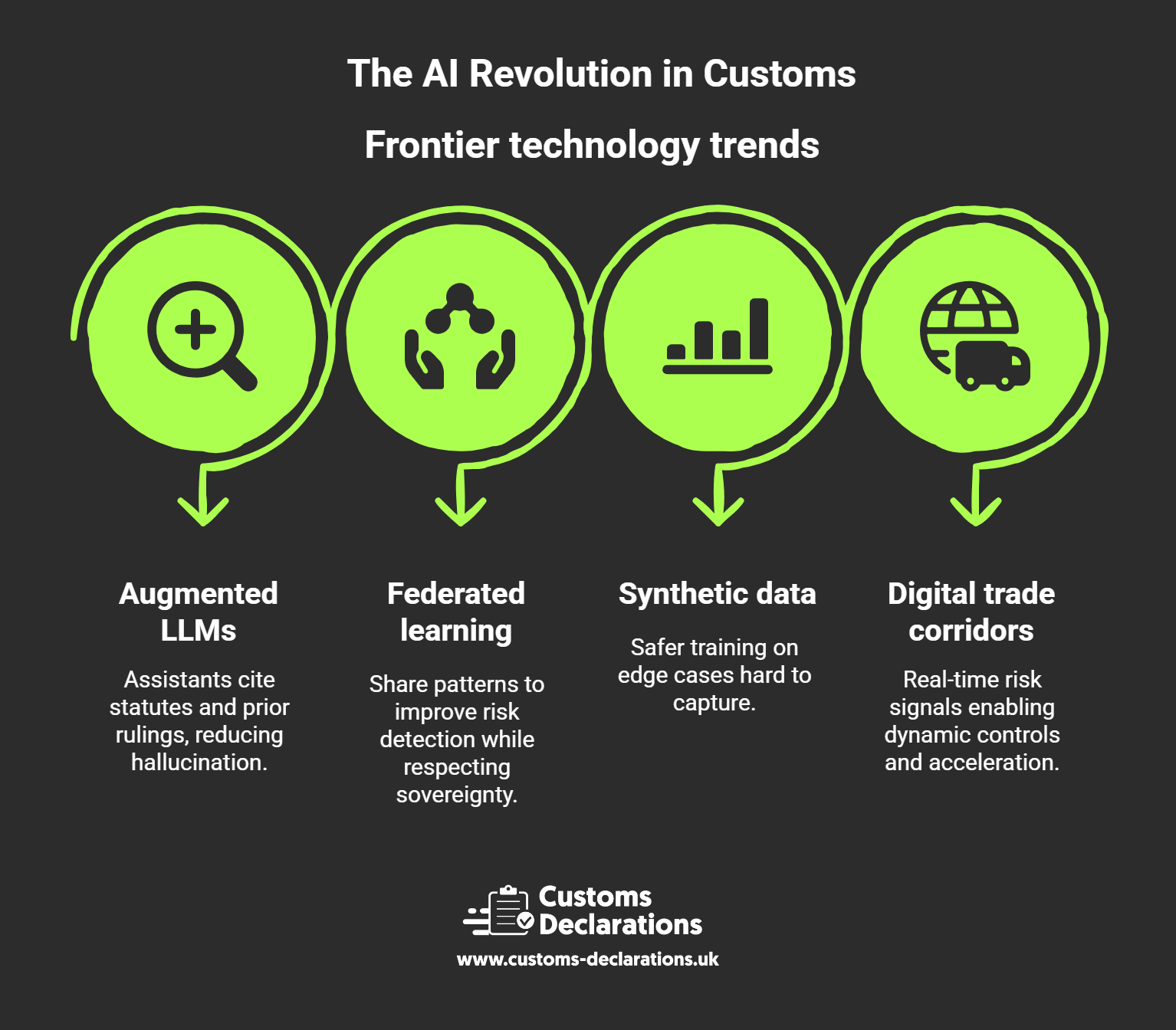An exhaustive map of where AI delivers value in customs
1) Automated classification (HS/HTS suggestion)
What it does: Converts plain-language product descriptions, technical specs, and sometimes product images into candidate HS/HTS codes with confidence scores and rationale.
Why it matters: Misclassification drives delays, penalties, and rework. AI-assisted classification narrows choices, surfaces legal notes and prior rulings, and teaches users what details (materials, function, processing) move a code.
Good practice: Keep the human in the loop; log the model’s reasoning; attach citations to legal notes and classification opinions to aid auditability.
2) Document AI: extraction, validation, and reconciliation
What it does: OCR + NLP to ingest invoices, packing lists, transport docs, certificates of origin, licences, and test reports; normalizes fields; cross-validates quantities, weights, values, and party identifiers across files.
Why it matters: Manual keying creates errors. Document AI raises first-time-right rates and highlights exceptions (e.g., value mismatch between invoice and declaration).
Good practice: Configure field-level confidence thresholds; send only low-confidence items to human review; preserve original images and extraction provenance for audits.
3) Risk management and targeting
What it does: Learns from historical inspections, seizures, and post-clearance audits to score consignments pre-arrival; flags anomalies in routing, valuation, trader behaviour, or document patterns.
Why it matters: Authorities can “green-lane” the vast majority of compliant shipments while concentrating scarce inspection resources on high-risk consignments.
Good practice: Combine supervised models (learn from labelled outcomes) with unsupervised anomaly detection; explain the drivers behind a score; continually retrain on feedback to reduce false positives.
4) Non-intrusive inspection (NII) intelligence
What it does: Applies computer vision to X-ray/CT images to detect density anomalies or contraband signatures; prioritizes which containers to open; assists officers with overlays and suggested findings.
Why it matters: Image volumes far exceed human capacity; AI triage amplifies officer effectiveness and reduces misses.
Good practice: Maintain robust red-teaming and blind testing; capture human confirmations/overrides to improve models over time.
5) Valuation analytics and fraud detection
What it does: Compares declared values to peer shipments, trade lane norms, and time-series behaviour; detects under-/over-invoicing patterns; uses graph analytics to surface carousel fraud, shell entities, and circular trading.
Why it matters: Revenue protection and fair competition depend on accurate valuation and detection of orchestrated fraud.
Good practice: Blend statistical baselines with knowledge-graph context (related parties, beneficial ownership); escalate only when multiple risk signals converge.
6) Regulatory intelligence and compliance assistants
What it does: Conversational copilots that answer “Can I ship this?” with citations to law, explain procedure codes and licence needs, and watch regulatory changes (sanctions, dual-use controls, tariff updates), mapping them to impacted SKUs and routes.
Why it matters: Rules change often; AI codifies expertise and ensures consistent, documented guidance.
Good practice: Ground responses in official sources; log every answer with source references; alert when confidence is low and a specialist review is needed.
7) Safety and security pre-screening
What it does: Runs real-time risk checks on pre-lodged safety/security filings; detects manifest anomalies, restricted goods, or routing red flags before cargo is loaded.
Why it matters: Intervening upstream reduces downstream disruption and improves border security.
Good practice: Pair streaming analytics with “time-boxed” queries to investigate spikes (“show anomalies from 10:30–10:45”) during live operations.
8) Post-clearance audit prioritization
What it does: Uses outcome-aware models to select traders/shipments for audit with the highest expected yield; detects behavioural drift (e.g., sudden code changes or persistent declaration under-valuation).
Why it matters: Targeted audits produce more findings with less friction on compliant trade.
Good practice: Provide explainability and fair-treatment safeguards; maintain audit trails for every selection decision.
9) Operational intelligence for ports and agencies
What it does: Forecasts arrival waves, inspection backlogs, and staffing needs; identifies process bottlenecks; recommends adjustments to meet service-level targets.
Why it matters: Small delays cascade. Predictive staffing and routing keep throughput steady.
Good practice: Combine historical trends with real-time signals (vessel AIS, flight schedules, weather, labour availability).
10) Trader experience and self-service
What it does: Wizard-style assistants that assemble accurate declarations, pre-validate data elements, and warn about missing proofs or licence expiries; 24/7 support through chat and API.
Why it matters: Better data at source → fewer holds later.
Good practice: Provide clear guidance and inline education; let expert users bypass to advanced forms; show “what changed” when rules update.
11) Tariff simulation and landed-cost planning
What it does: Models duty, VAT/GST, quotas, and preferences under current and proposed tariff schedules; flags opportunities to restructure supply chains for lower duty exposure.
Why it matters: Strategic planning reduces cost and builds resilience against policy shocks.
Good practice: Version and date-stamp scenarios; link simulations to actual declarations to measure accuracy.
12) Knowledge-graph entity resolution
What it does: Unifies shippers, consignees, forwarders, owners, and officers across spelling variants and IDs; reveals hidden relationships and repeated patterns across trade lanes.
Why it matters: Risk becomes clearer when you see the network, not just the node.
Good practice: Track provenance of merges; allow analysts to split/merge entities with review controls.
13) Generative AI for narratives and explanations
What it does: Explains risk decisions in plain language, drafts inspection notes, and summarizes multi-document case files; produces bilingual outputs for traders and officers.
Why it matters: Clarity accelerates decisions and improves fairness.
Good practice: Require citations, show uncertainty, and keep humans accountable for final decisions.

